You’re out on a hiking trip with a couple of buddies when your friend slips and breaks his leg late at night. Hiking out is not in the picture, and you weren’t prepared for an overnight trip.
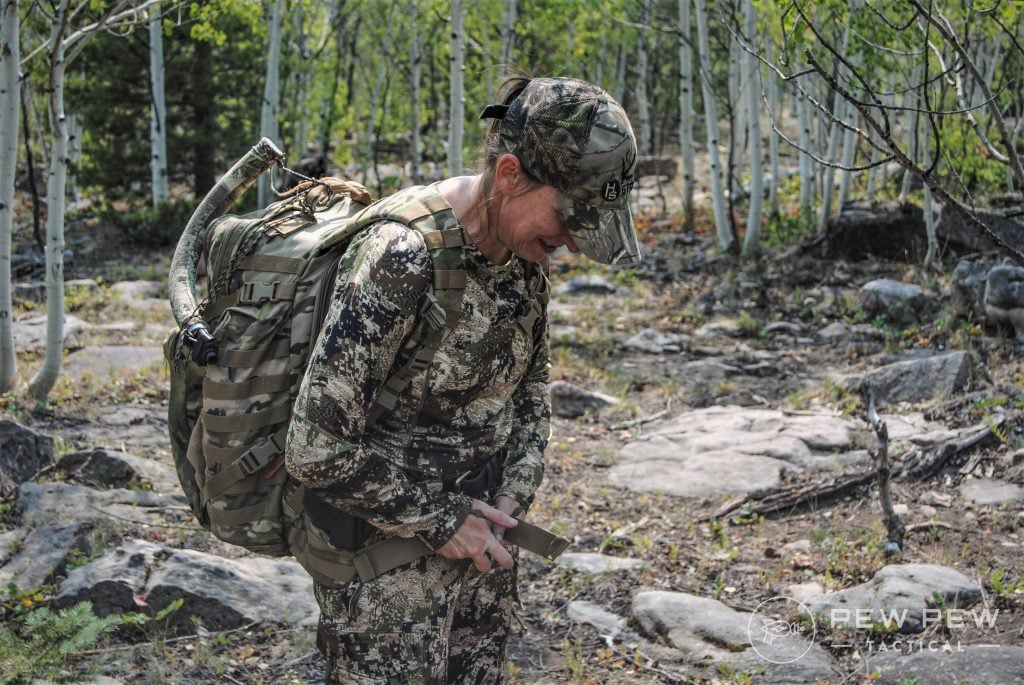
Hunkering down for the night is your only option. Unfortunately, this is going to put you up against one of nature’s most potent killers: the cold.
Aside from keeping your buddy safe and as comfortable as possible over the night, you now must put your skills to the test.
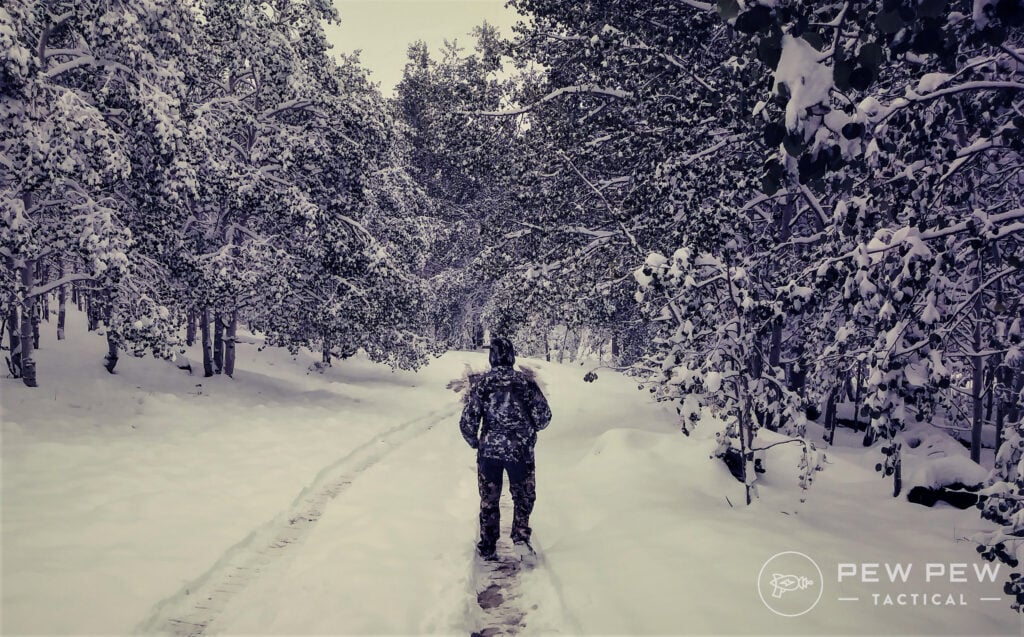
But how do you survive the extreme cold?
We’ll walk you through how to prep for freezing temperatures and how to combat the cold when you’re stuck in it.
By the end of this article, hopefully, you’ll be better prepared to withstand dropping temps.
Table of Contents
Loading…
Preparation for Cold Weather is Key
There’s an old Viking proverb that goes, “There is no bad weather, just bad clothing.”

This is true, and you would be wise to heed the kinsfolk of William Wallace’s advice. If you go outside, you need to ensure that you are dressed for the weather.
The most important thing you can do to survive the extreme cold is prepare beforehand.
So how do we do this?
Dress Like an Onion
Perhaps I should have said to dress like a cake. Everybody likes cake.
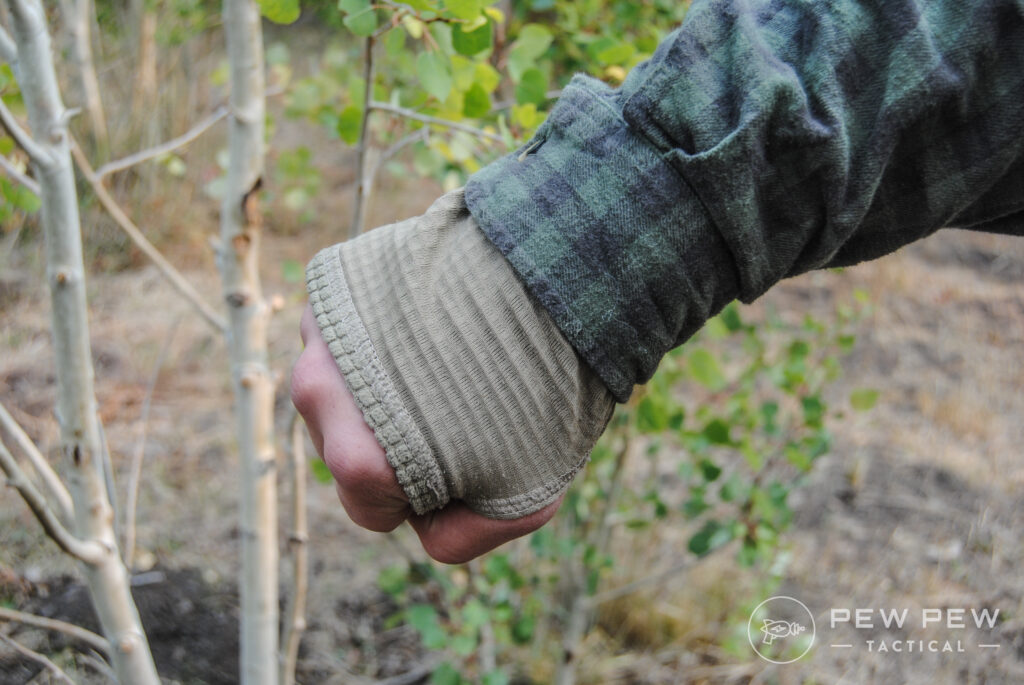
Anyways, the point is that you should dress in layers. This allows you to trap extra gaps of warm air and hold all those molecules comfy close to your body.

Avoid Cotton Like the Plague
Cotton kills.
So goes the old backpacker’s expression, and you need to keep it in mind if you’re going out in the woods. Once wet, cotton loses all insulative abilities.
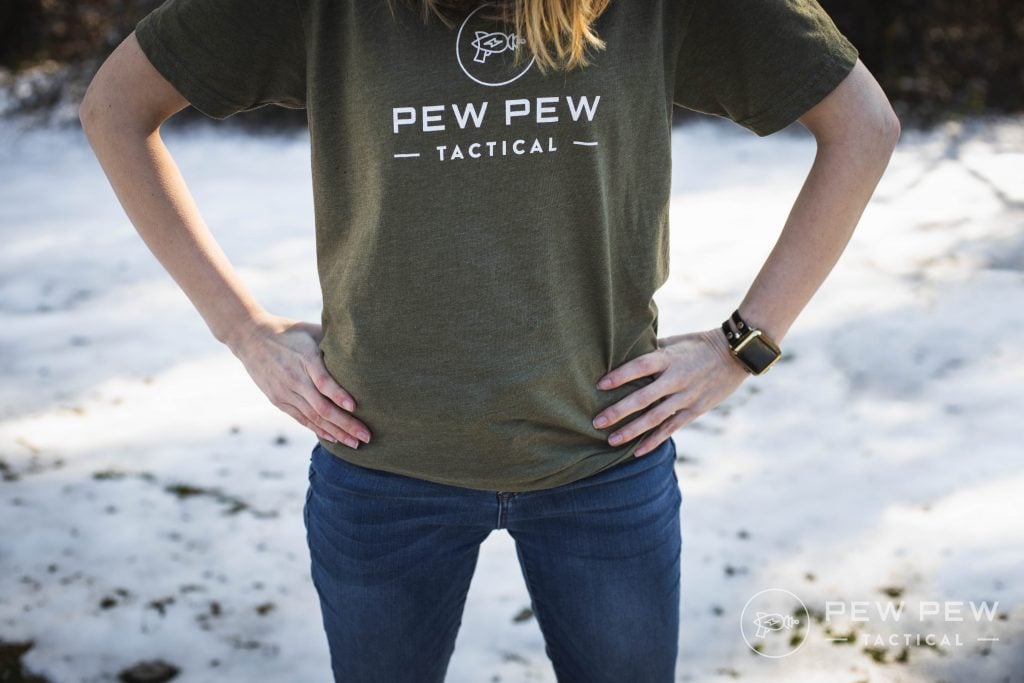
You might as well just run around naked at that point.
In contrast, wool still retains its insulative properties if wet.
There are other fabrics out there that will do a good job of keeping you warm (fleece comes to mind).
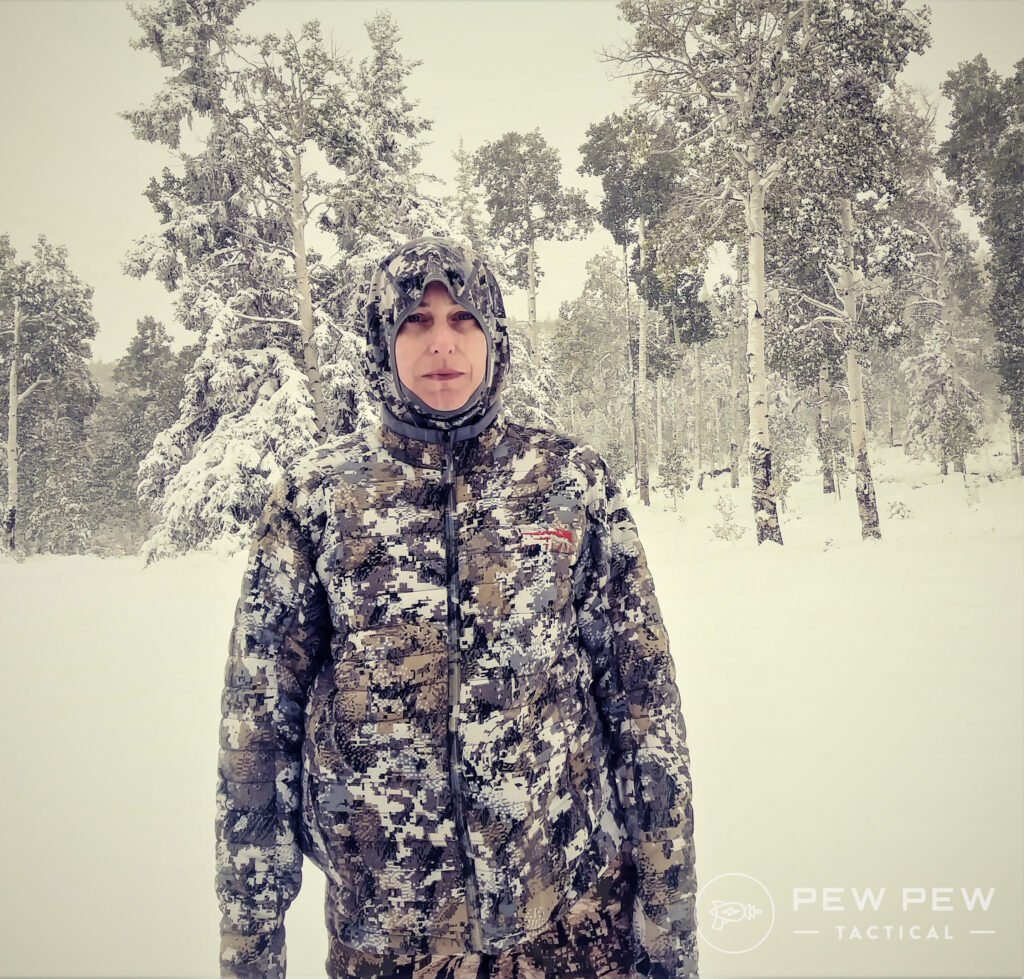
But whatever you choose, do your best to avoid cotton if you are going out into the woods for an extended time.
Mittens, Not Gloves
No, you won’t have as much manual dexterity with a pair of mittens, but they will keep your fingers warmer than traditional gloves.
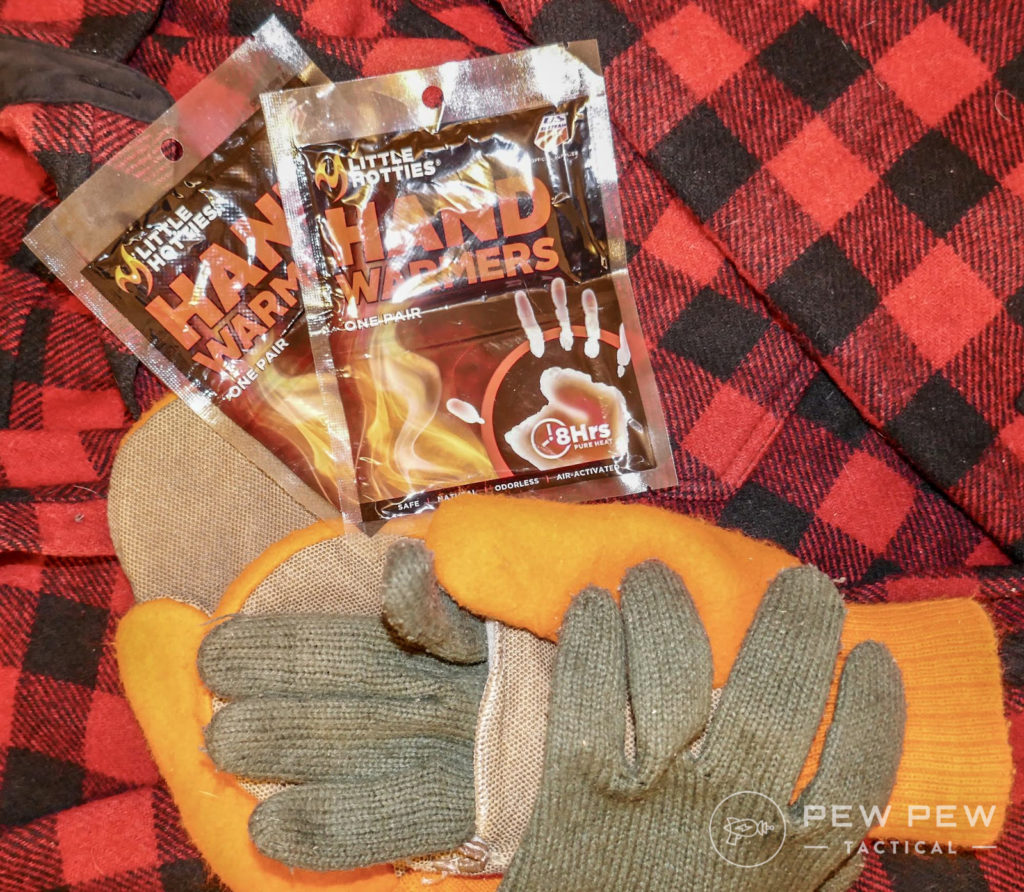
This is because your fingers help each other out with retaining body heat.
In gloves, each finger is on its own when it comes to retaining heat.
Carry a Fire Starter
There’s really no reason not to do this if you’re going out into the woods. A simple Bic lighter is incredibly light, very cheap, and doesn’t take up much space at all.
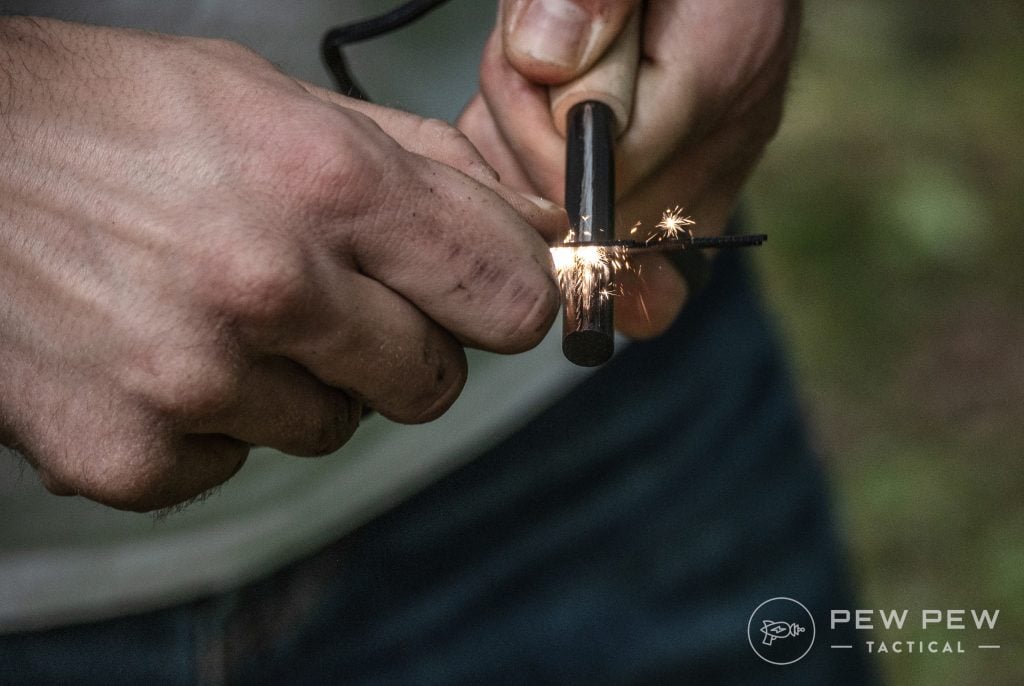
An Uberleben fire striker has the same going for it.
This one simple piece of equipment can easily help save your life in the woods. Keep one on your person at all times as a result.
Prices accurate at time of writing
Prices accurate at time of writing
-
25% off all OAKLEY products - OAKLEY25
Copied! Visit Merchant
(If you’re looking for a quality fire starter, check out our analysis of the best of the best here.)
Keep Space Blankets and Hot Hands Handy
A space blanket and Hot hands are two items I think you need most.
-
25% off all OAKLEY products - OAKLEY25
Copied! Visit Merchant
Both of them have literally saved my bacon in the past, and ever since, I’ve become a huge believer in them.
You should get some.
-
25% off all OAKLEY products - OAKLEY25
Copied! Visit Merchant
You’re Stuck in a Survival Situation: How to Stay Warm
Your broken leg buddy, and you need to stay warm.
But you’re deep within the Blue Ridge Mountains, and you know you need to do something fast.
So, what are the steps you can take to ensure you both live through the night?
Let’s take a look…
Step 1: Build a Shelter
One of your first thoughts in this type of situation should be how to make a shelter?
In a cold environment, exposure will kill you before anything else does.
Yes, food and water are most certainly important, but shelter needs to come first.
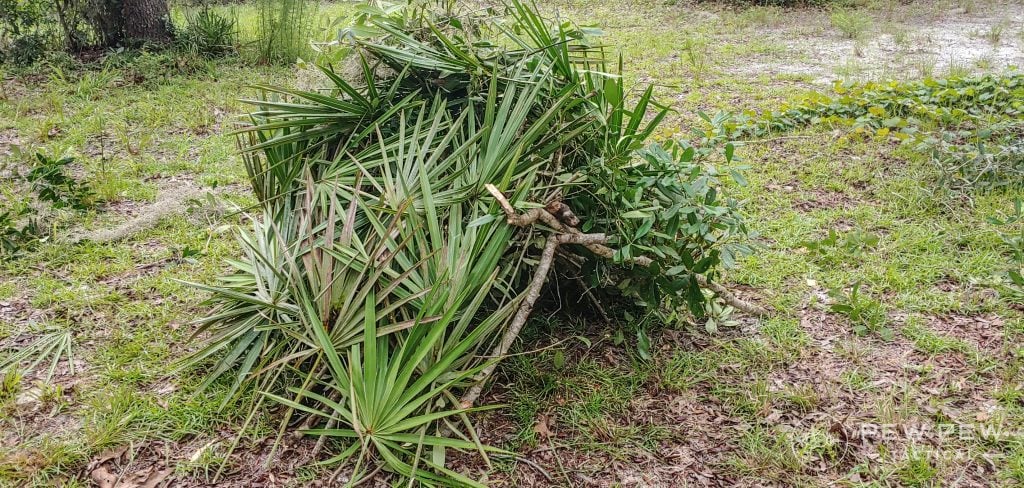
Once you have that squared away, then you can start to think about all of the other essential needs.
As such, some basic knowledge of constructing a survival shelter is essential.
This doesn’t require a vast working knowledge of knot-tying, cordage, or anything of the like. Not that that information is bad, but really, the only limiting factor here is your creativity.
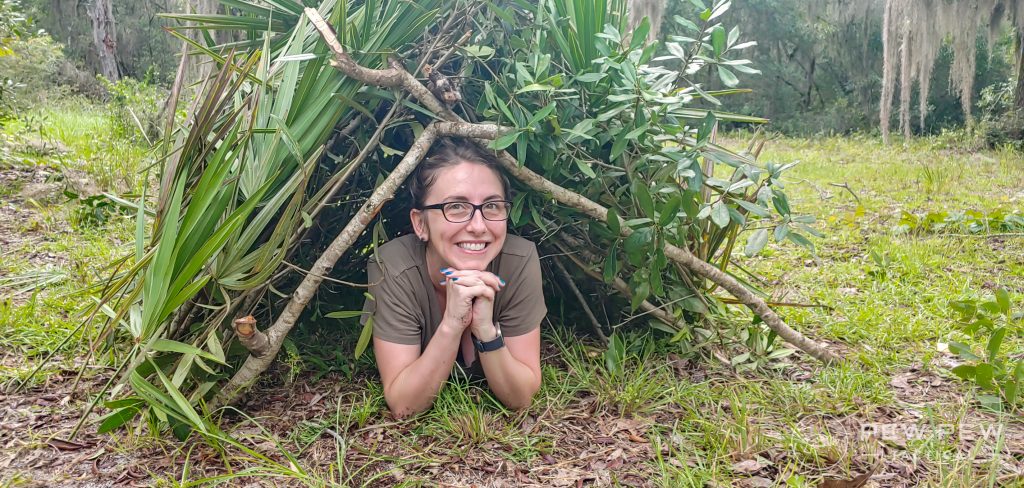
Go back to being your 4th-grade self and figure out how to make a “fort” out of what’s around you. It doesn’t matter how pretty the structure, you just need something to get you out of the wind and rain and retain heat.
If you can do that, you’ve just taken a massive step towards staying alive.
(Coincidentally, this “build a fort” mindset is the reason that small children are more likely to survive in the wild overnight than adults. Adults press on, despite the weather, looking for help. Little kids get cold, find a hole in a tree somewhere, and stay put.)
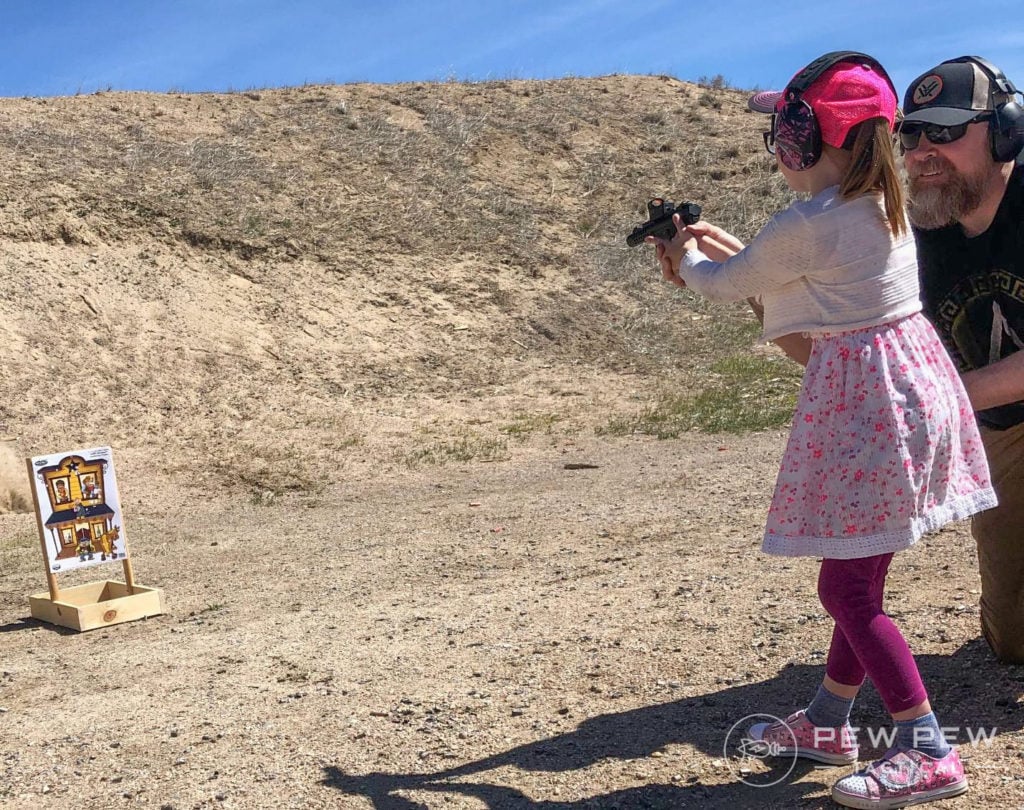
Need some ideas on what those shelters could end up looking like?
Then I highly recommend reading Tony Nester’s Knife-Only Survival.
I’ve read a lot of survival books over the years, and his analysis of the subject is hands-down one of the best no-nonsense, tried-and-true approaches to shelter building I’ve seen.
Step 2: Do Everything You Can to Avoid Sweating
The act of shelter building, hiking, or carrying an injured buddy is physically strenuous. And the problem with this is it might make you sweat. This is something you want to do everything you can to avoid.
If you end up getting wet, you’re going to have a much harder time staying warm — and this could potentially be the final straw staying alive.
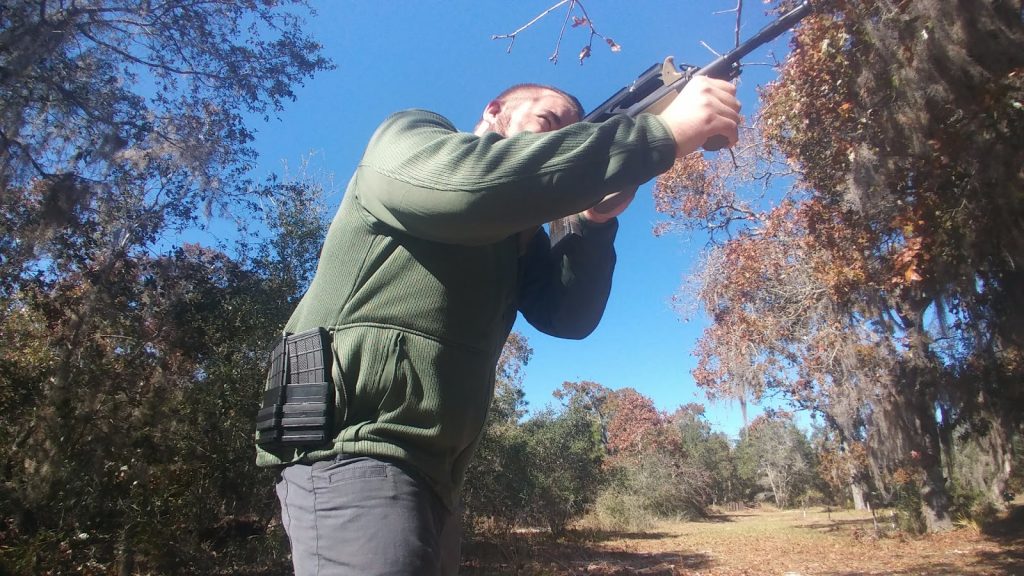
So, if you feel yourself growing heated and on the verge of sweating, either take a break for a moment or strip off a layer of clothing.
Seriously, you can’t afford to sweat in these types of environments.
Step 3: Become the Stay-Puft Marshmallow Man
Survival situations tend to be thrust upon people when they least expect them. It’s because of this that people are often not dressed for success.
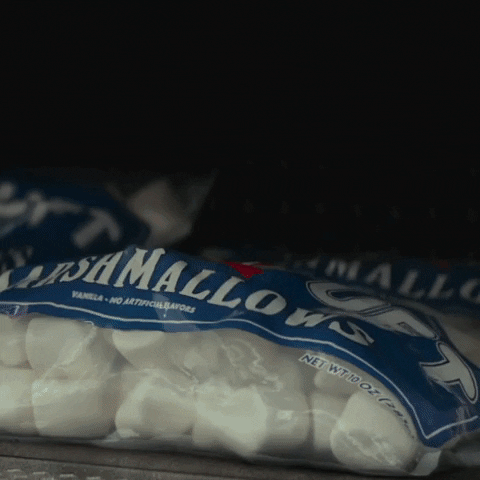
If you find yourself in a situation where you’re clothing just isn’t cutting it against the bitter cold, add insulation! Paper, pine needles, leaves – take whatever you can find and start stuffing it into your clothing.

You’re going to end up feeling like Dorothy’s Scarecrow – and perhaps start wishing you had a brain – but you are using your creativity and the building blocks around you to survive despite the elements.
Step 4: If Possible, Build a Fire
This will depend on your ability, what you have on hand, and the weather around you.
If you have zero fire building experience, it’s raining, and you don’t have a fire striker or lighter, this is likely to be downright impossible.
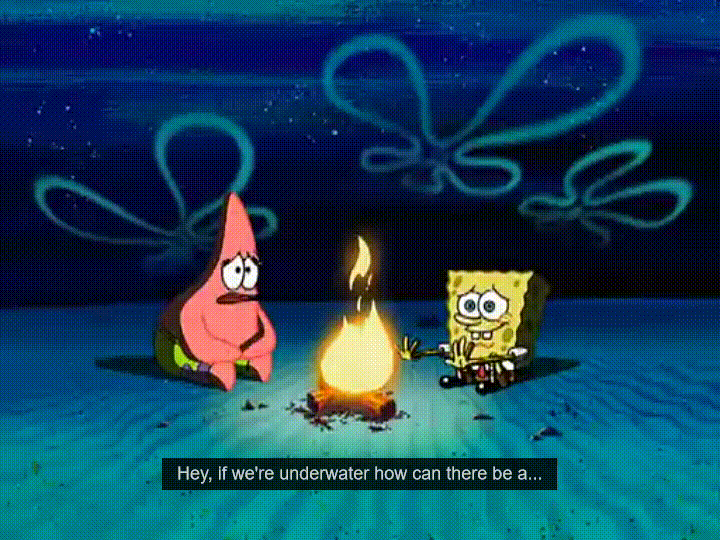
However, if you can, this will be a boon to your survival.
Nobody plans to end up in a survival situation. They just happen, so it’s absolutely vital to carry some means of fire starting with you when you go out into the woods.
When disaster strikes, you’ll be much better prepared.
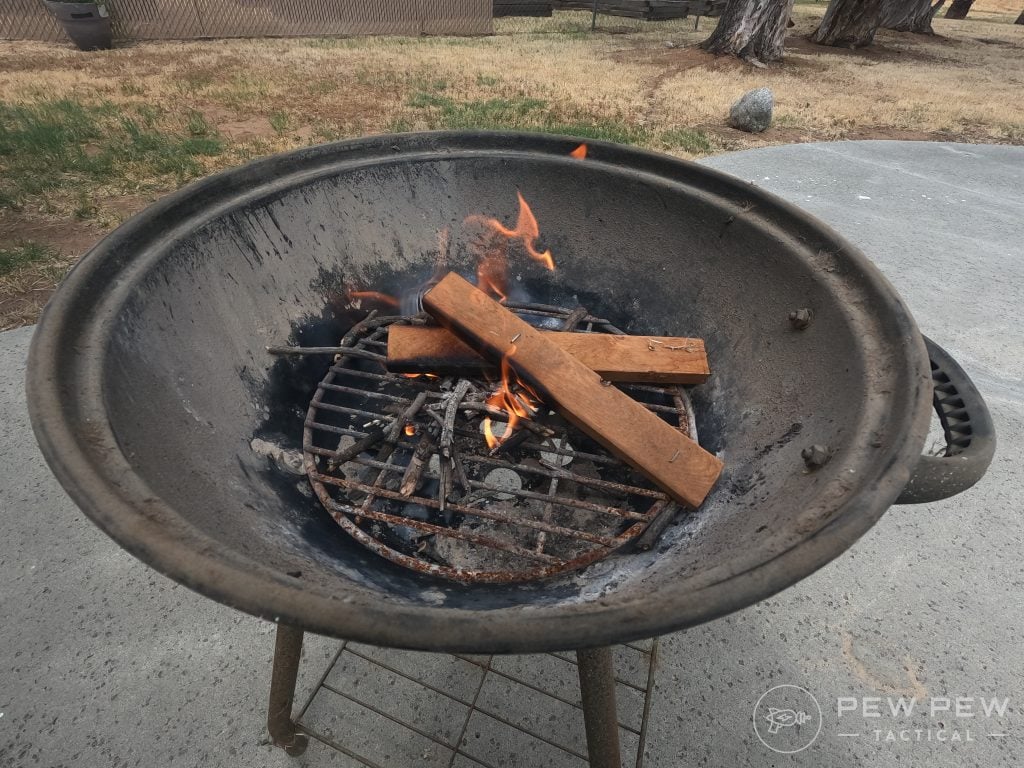
When building a fire, you’ll get much more heat if you build a reflecting wall on the backside of it. This can be made from stone, dirt, wood, or a mylar space blanket.
By building one of these, you end up reducing your fuel consumption by upwards of 50% — as all that heat reflects back into your shelter rather than being lost out into the woods.
Step 5: Don’t Drink That Whiskey or Coffee!
While drinking hot liquids is a great way to boost your core body temperature, if those liquids are alcohol or coffee, you could end up doing more harm than good.

Caffeine accelerates the effects of hypothermia, while alcohol slows down your circulation and makes you less aware of the effects of the cold on your body.
The result? Hypothermia.
“But anytime I drink whiskey, I get a warm fuzzy feeling all over! If I have my pocket flask, why not drink it?”
That warm feeling comes from the blood leaving your core and flowing to your skin and extremities.

While this may lead to a temporary feeling of warmth, you’re ultimately drawing heat away from your heart and other vital organs.
Your core temperature is what you want to take care of first, not your limbs.
Step 6: Eat Some Food
While drinking coffee or alcohol is a no-no in a cold survival situation, you do want to eat something if it’s available.
This will increase your core body temperature, helping you do a better job of warding off the cold.
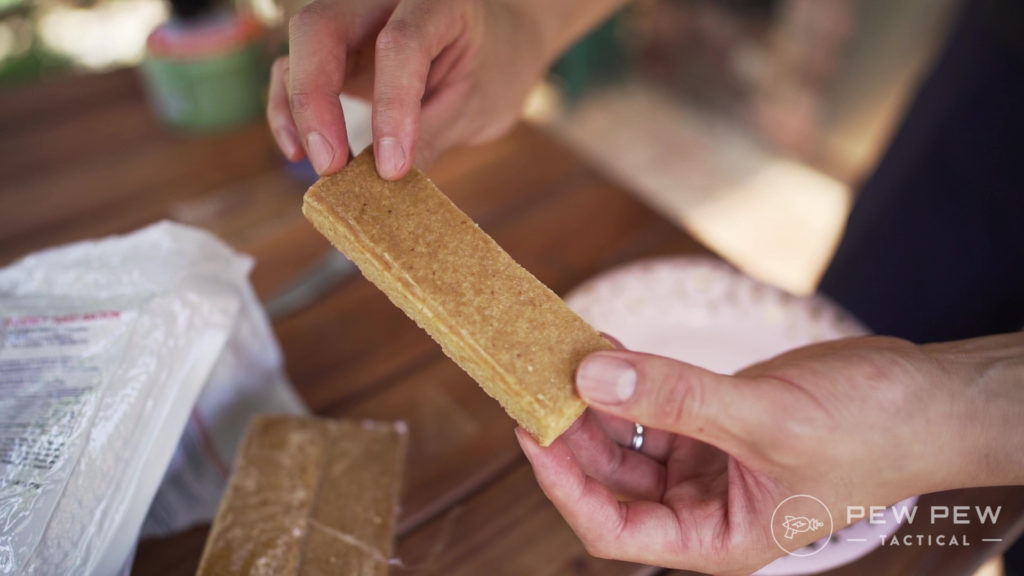
Some form of simple carbohydrate (e.g., candy bars) will ramp up your body heat, while complex carbohydrates will help your body produce heat over a longer period.
If available, eat both.
What Do You Do If You End Up Stranded in Your Car?
You’re driving home from your friend’s place late at night, and the snow has been falling pretty steadily for a few hours.

Despite your caution, you hit a patch of black ice and skid off into a snowbank. You’re in the middle of nowhere, your phone is dead, and it is very cold outside.
What do you do?
Stay Put
According to the Red Cross, your best bet is to stay put — especially if you can’t see help anywhere within 100 yards.
There are a few reasons for this.
For starters, your car is a made-ready shelter.
Inside you’re protected from the wind, snow, rain, and you have a roof over your head that will help retain heat.
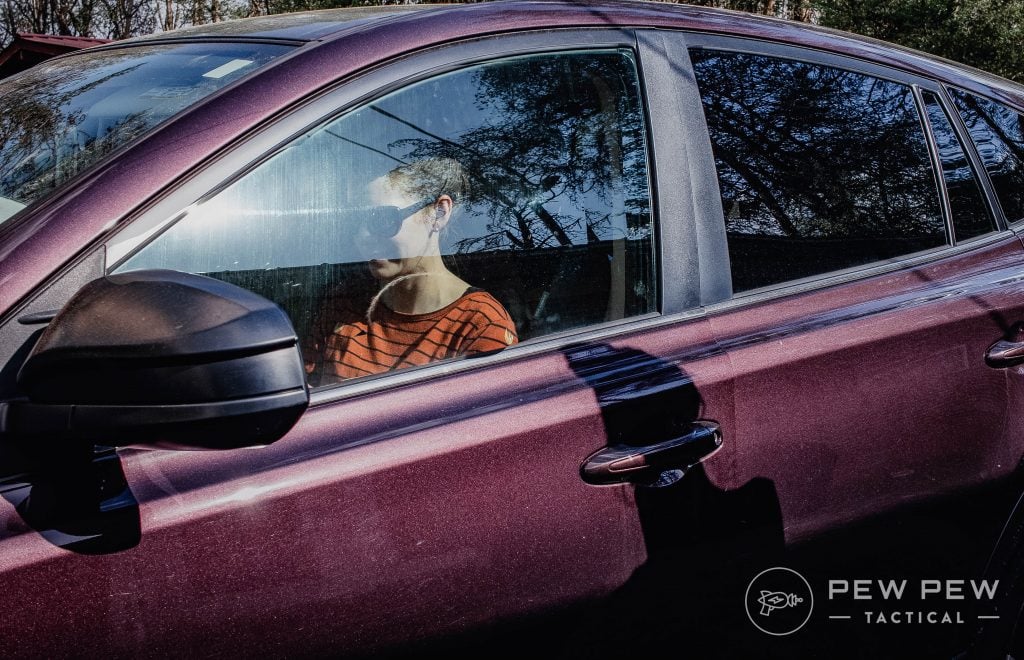
Next, there’s a higher chance of somebody seeing you offer help if you’re in a big car compared with being on foot.
In any type of whiteout situation, you might lose track of the road and get lost too. That’s a deadly situation to find yourself in when it’s that cold outside.
By staying in your car, that’s not a factor you need to worry about (at least not immediately).
Try to Catch Attention
If you can, tie something bright to your antenna to garner attention.
This will help let people know there’s somebody in distress. It may help you get out of there a lot quicker.
Honking if you see a passing car is another way to get somebody to stop.
Don’t Sleep All the Time
When it comes to sleeping in your car, be incredibly careful.
Your core body temperature automatically lowers when you go to sleep. In a survival situation in extreme cold, that’s something to be careful of. You do want to wake up again.

So, if you’re on your own, do what you can to wake yourself up every few hours to get your circulation pumping and temperature raised once more.
If you’re with others in the car, it would be wise to take turns sleeping.
This way, not only is one person able to ensure that everyone in the car is alright, but you always have somebody watching the road for help as well.
Occasionally, Start Your Engine
For heat, start your car engine for 10 minutes every hour.
This will help increase the ambient temperature inside your car, boosting your core body temperature as a result.
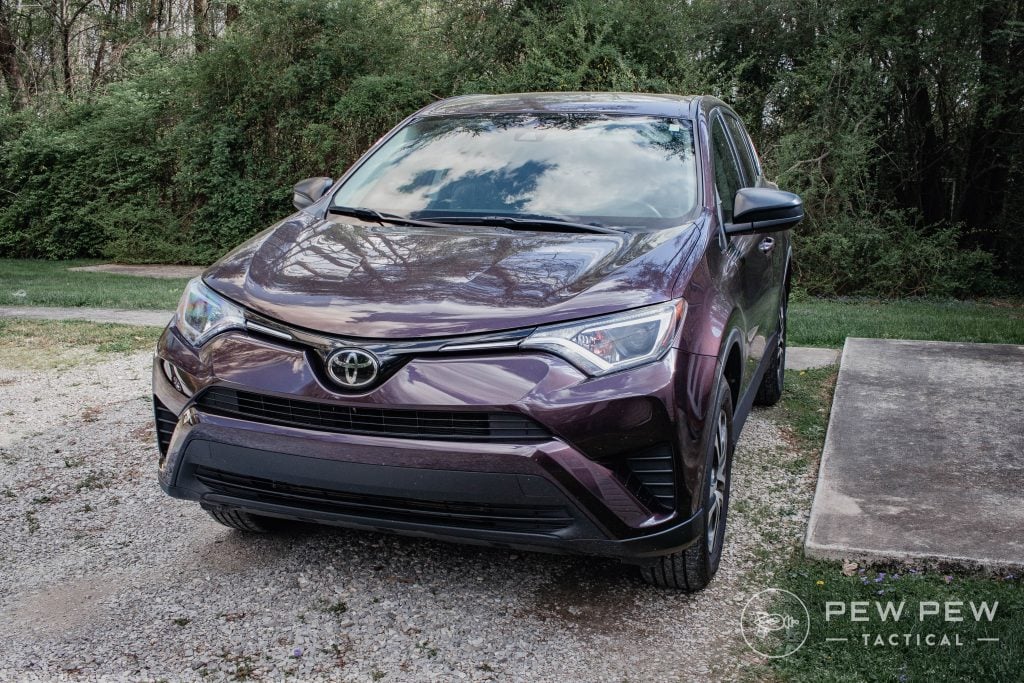
You have to make sure you’re keeping your exhaust pipe clear of snow if you do this, though.
Carbon monoxide poisoning is a threat, afterall.
What if You’re at Your House When Cold Strikes?
Blankets and layers of clothing are your best bet. You already have a shelter in such a case; you just need to ensure you’re warding off the ambient temperature.

But beware of carbon monoxide poisoning. Don’t even think about warming your house with a gas stove or oven. You’re asking for an early death if you do that.
Don’t use a grill or generator inside your house either. Really, it’s the same reason (plus, the fire risk).
Fighting Frostbite
Unless you want to end up living life like Mr. Deeds, you need to combat frostbite.
Fingers, toes, noses, and ear lobes are the most likely culprits of frostbite. If you feel any of these areas going numb or see them changing color to white/gray, you’re well on your way to developing a serious case of frostbite.
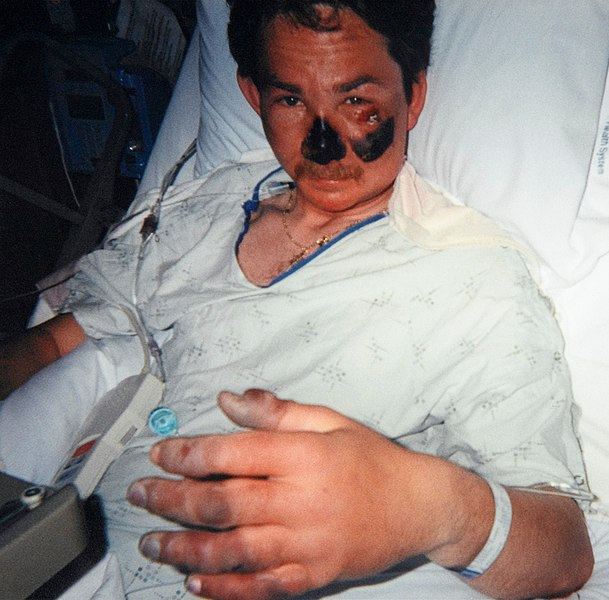
While I’m most certainly not a doctor, this is the generally recommended first-aid advice for those who are suffering from frostbite:
For starters, get somewhere warm. Getting out of what’s causing the frostbite in the first place is vital.
Placing frostbitten hands or feet into bowls of warm — not hot — water can help raise the temperature back to a normal level. Just forewarning, this process can be painful.
If warm water isn’t available, skin-to-skin contact can help prevent potential long-term consequences.

Do not massage the affected areas! Remember, that skin is frozen! That means there are tiny ice crystals in there.
If you go about massaging frostbitten fingers, all you’re doing is rubbing little pointy ice crystals against sensitive tissue. You can cause significant damage by doing so.
Let the affected area warm-up of its own accord, not through friction.
If it’s fingers or toes that are frostbitten, you can place pieces of sterile gauze in between them to keep them separate and from sticking to each other.
-
25% off all OAKLEY products - OAKLEY25
Copied! Visit Merchant
Do not let the frostbitten area become frozen again.
Once more, we’re talking about significant injury if you let that happen — potentially amputation.
Conclusion
One of the best things you can do for situations is prep! If you have the space blankets, wool socks, and other necessities to stay warm in these situations, you stand a much better chance than someone who doesn’t.
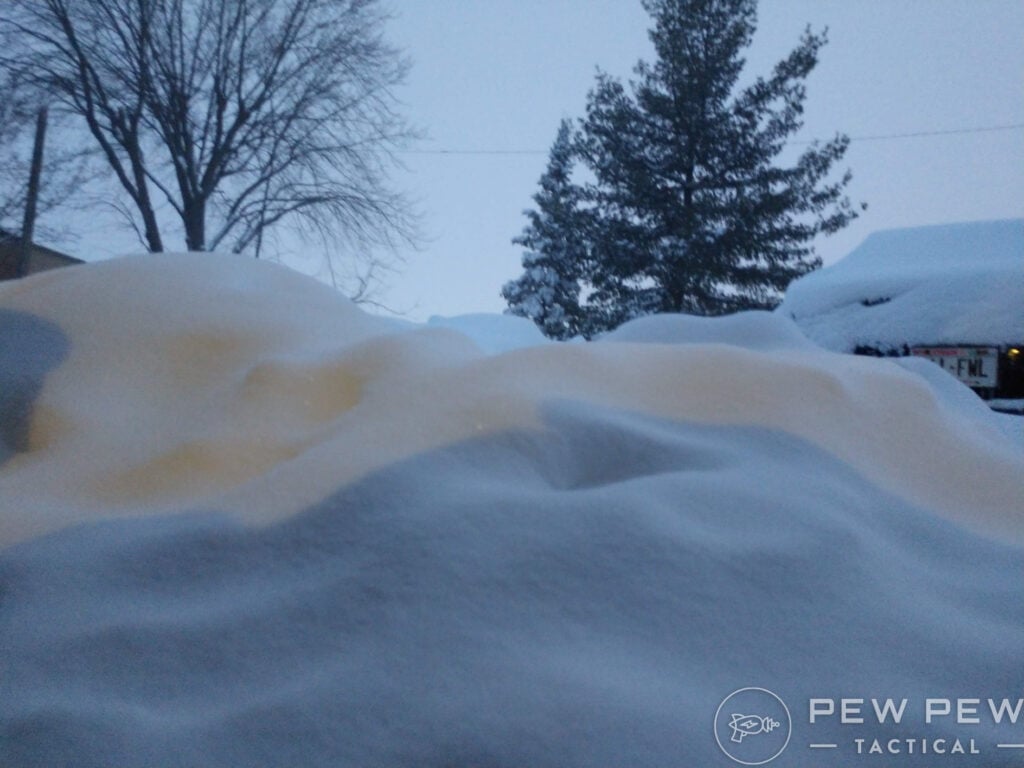
The most likely thing to kill you out in those woods is the cold. You must know how to stay warm if you’re going to be out there for an extended period.
However, by following the above advice, you’ll have the mental toolkit necessary to help ensure you live to see another day.
Have you ever found yourself at the mercy of the elements in the past? Let us know in the comments below! For more on survival, check out our Survival Category dedicated to helping you stay alive.

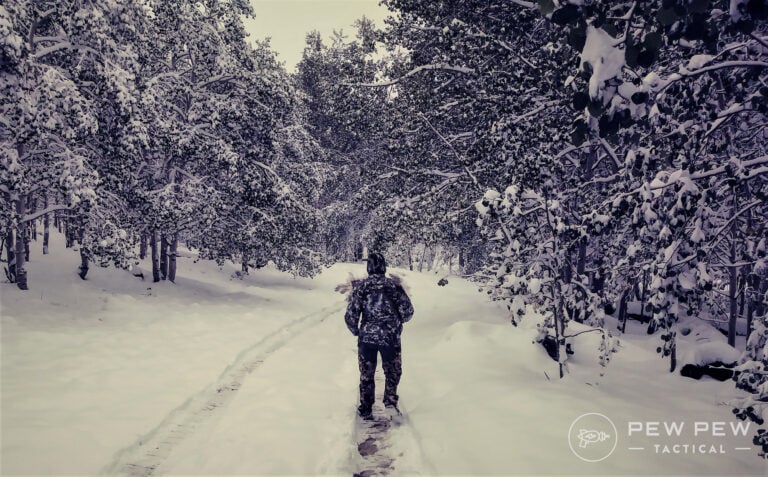











4 Leave a Reply
What about surviving in extreme heat without air conditioning?
Living in Minnesota, a winter survival kit in your vehicle is essential. One thing I would note if you're stuck outside overnight in the cold, aside from building a shelter, find a way to get your body off the ground. Sleeping with something between you and the ground is the number one way to stay warm. You could have the warmest-rated sleeping bag in the world and be freezing if you're right on the ground vs having a good sleeping pad under you. In a survival situation, I'd look to pile pine branches, grass, and moss, whatever you can find, in a layer to elevate yourself from the frigid dirt.
Always carry spare wool socks and a watch cap. Throw a plumbers candle in your fire kit.
"You have to make sure you’re keeping your exhaust pipe clear of snow if you do this, though.
Carbon monoxide poisoning is a threat, and killing yourself to stay alive kind of defeats the purpose."
And, keep a little flow through ventilation going especially in older cars. Crack a window ever so slightly in front and rear so some fresh air enters and any possible carbon monoxide can escape.
Another survival thing for the car or outdoors shelter- a metal one pound coffee can with some vent holes in the sides and top, a candle on a metal "plate" sitting on a 1/4 thick heat/fire proof base. Carry extra candles, you need the big round plumbers type candles. Crack the car windows just a little for some flow through ventillation, light the candle in the on the base and put the coffee can over it. You can do this outside the car too in say an emergency shelter. Its amazing how warm this will make a small shelter or car after a bit, you will be venting garments to cool down. Carrying the coffee can though might be a little cumbersome for hiking. But in the car in the winter, I use the can to hold the candles and other small emergency cold weather stuff and just put it in the back. I forget where its at now, but someone makes a foldable version of this concept that would be great for back packing.